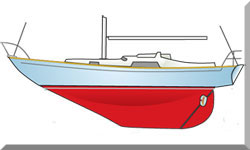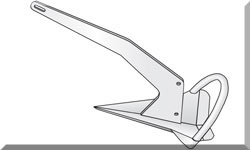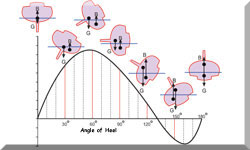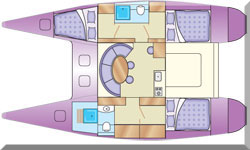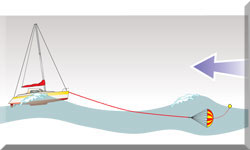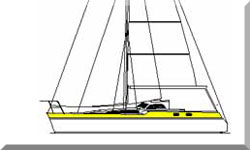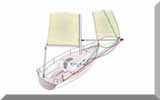- Home
- Hunter Sailboats
Hunter Sailboats
Wander through any marina, or drop anchor in a bustling bay, and chances are you'll spot a Hunter sailboat cutting a familiar silhouette against the horizon.
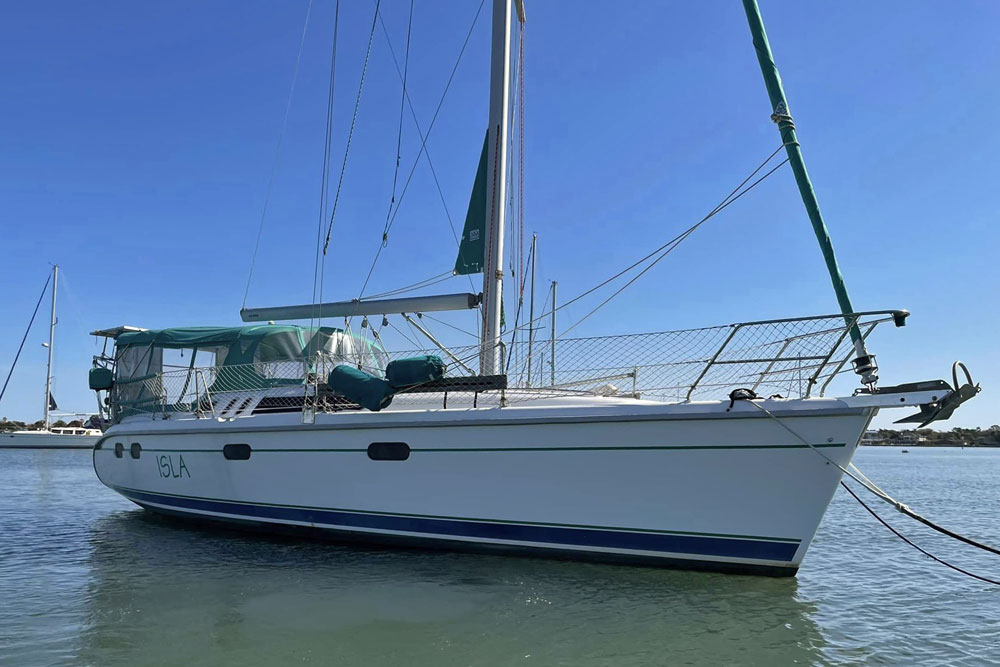 Hunter 376
Hunter 376For decades, these boats have been a common sight, offering a unique blend of comfort, smart design, and surprising accessibility that truly opened up the world of recreational sailing to countless enthusiasts. They might not always win the grand race, nor do they always adhere to every last tradition, but for a huge number of sailors, a Hunter sailboat is simply a well-thought-out platform for living life on the water.
 Hunter 34
Hunter 34A Tale of Two Hunters: A Relative Across the Pond
The story of Hunter, as it turns out, isn't quite as straightforward as a single company. Instead, we're talking about two distinct entities – one born in the US, the other across in the UK – both driven by a shared, powerful idea: let's make sailing a whole lot easier for more people.
Back in the early 1970s, Hunter Marine Corporation took root in the United States, brainchild of brothers John and Warren Luhrs. Their family, you see, had been in the boat-building game since the 1800s, so they certainly knew their way around a shipyard. Their big stroke of genius? Take a leaf out of Henry Ford's book and apply efficient, repeatable production techniques to building sailboats. The aim was clear: deliver well-equipped boats at a price that wouldn't make your eyes water, essentially throwing open the gates of sailing to a much wider audience. The very first Hunter sailboat, the Hunter 25, designed by John Cherubini, splashed down in 1973. It's a neat bit of trivia that Warren Luhrs, a formidable singlehanded ocean racer, actually used his own racing yachts, Thursday's Child and Hunter's Child, as floating testbeds for innovations that eventually trickled down into production models. Think features like the now-iconic B&R rig and those practical sail arches. After navigating the turbulent waters of the 2008 recession, and a necessary Chapter 11 restructuring, the American operation found a new home in 2012 when David Marlow of Marlow Yachts stepped in, eventually rebranding the firm as Marlow-Hunter sailboats. Even today, they're still building these popular cruising vessels from their Florida facility.
Meanwhile, over in the UK, Hunter Boats Ltd. had already set sail in 1969. Initially, Michael Polard’s Essex Boat Company was busy turning out the successful National Squib keelboat, but it wasn't long before they ventured into closed-deck yachts. Early designs, like the Hunter 490 and Hunter 701, came from Oliver Lee. By 1975, David Thomas became their lead designer, penning some truly iconic British Hunter creations such as the Sonata and Impala. The British company eventually gravitated toward cruising boats in the 1980s, producing much-loved twin-keelers like the Horizon series. Alas, Hunter Boats (UK) faced administration in 2008, with Lauren Marine later acquiring the rights and molds. They continue to build a select range today under the "British Hunter" banner. However, for the purposes of this deep dive, our focus will primarily remain on the more globally recognized American-built Hunter sailboats.
Hunter's driving philosophy, regardless of origin, has consistently revolved around crafting yachts that are comfortable and genuinely easy to handle. You wouldn't typically pitch them against dedicated racing machines, but their mission was straightforward: build Hunter sailboats that are stable, simple to manage, and offer generous interior space for comfortable living, whether you're just out for a weekend or planning extended coastal cruises.
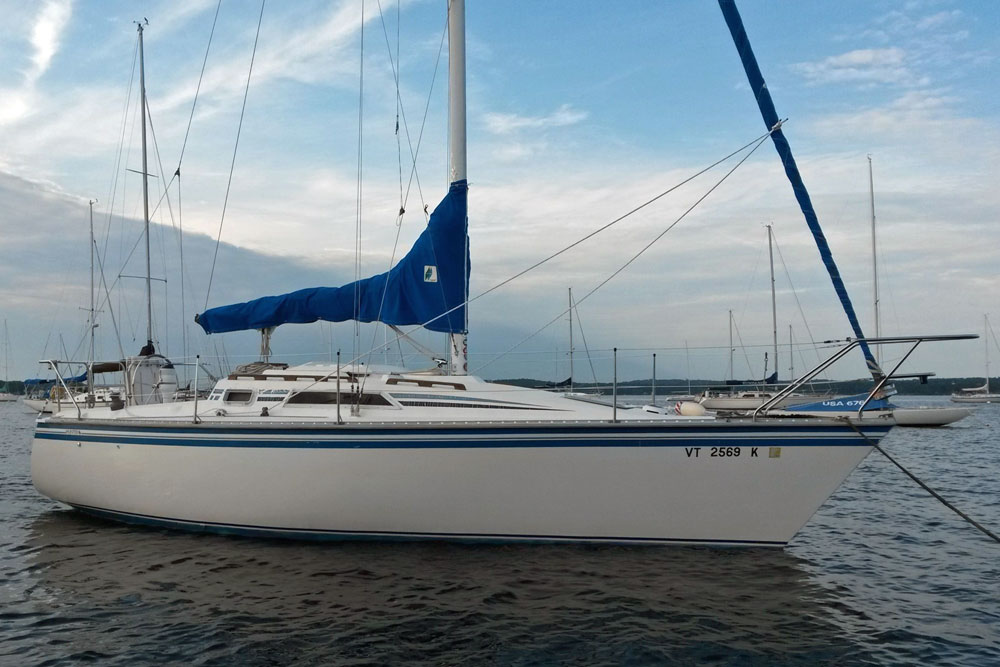 Hunter 28.5
Hunter 28.5Evolving Lines
Hunter sailboats often have a distinctive look, thanks to a series of evolving design hallmarks over the years. Earlier American models largely bore the signature of John Cherubini. Later, though, collaborations with naval architects like the UK's David Thomas, and, crucially for the American line, Glenn Henderson, truly redefined the brand's aesthetic and performance. Henderson, in particular, became a consistent design force for Hunter from around 2002, bringing a more refined touch to their hull forms and deck layouts.
One of the most instantly recognizable features on many a Hunter sailboat – especially from the Cherubini era onwards – is the B&R rig. This isn't just any old sail plan; it's a fractional rig often characterized by those dramatically swept-back spreaders and, notably, no backstay. What's the clever trick there? It allows for a massive roach on the mainsail, grabbing more wind up high where the air is cleaner. Many sailors swear by this design for its surprising ease of handling and decent upwind performance, even if some traditionalists might raise an eyebrow at its less conventional appearance. Then there's that ubiquitous cockpit arch, a truly practical bit of kit. It neatly keeps the mainsheet out of the way, serves as a handy attachment point, and often doubles up as a perch for davits or solar panels.
Hunter's target demographic has always been recreational sailors, pure and simple. Their designs deliberately prioritize interior volume and ease of operation over sheer speed. This focus becomes obvious when you look at their wide beams, often carried well aft. It’s what gives you that immense interior space and superb form stability, making them feel less tender when sailing along at a modest heel.
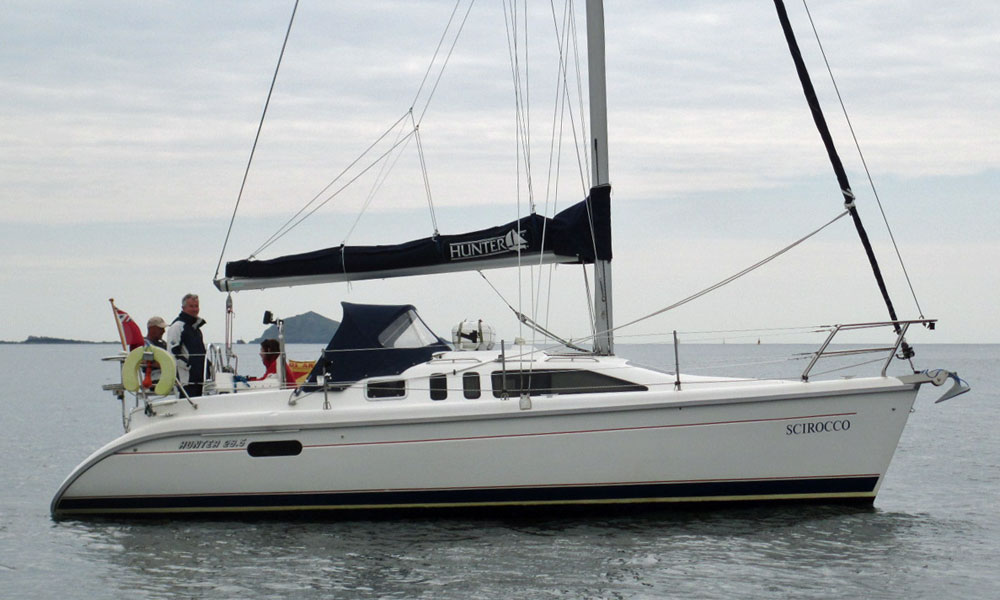 Hunter 29.5
Hunter 29.5Over the years, the Hunter factories have churned out a remarkable array of models. Among the most popular and genuinely successful Hunter sailboats that spring to mind are:
- Hunter 34 (Early 1980s): This one was a real winner for the brand, hitting a sweet spot of size, comfort, and performance for its time. A few early versions drew a bit of flak for being a tad tender in a blow, but later production runs wisely beefed up the ballast to sort that out.
- Hunter Legend Series (e.g., 35.5, 40.5): The "Legend" badge marked a pivotal period where Hunter truly cemented its reputation for incredibly spacious, comfortable cruisers, often with rather well-appointed interiors. These Hunter sailboats absolutely soared in popularity, especially for those dreaming of living aboard or embarking on extended cruises, thanks to their easy handling.
- Hunter 707 (British Hunter): While our main focus is on the American lineage, the British-built Hunter 707 certainly deserves a mention. Launched in 1995, it was a sprightly high-performance sportboat, even earning "Yacht of the Year" accolades, showcasing a different facet of Hunter's design capabilities.
- Hunter 33, 37, 40, 42SS, 47, 50 (Marlow-Hunter era): The more recent Marlow-Hunter sailboat models continue the tradition of maximizing interior space and user-friendliness, all while weaving in modern aesthetics and construction techniques. Take the Marlow-Hunter 31, for instance – it boasts an interior volume that would have impressed on a 40-footer just a few decades ago.
Other popular models include:
- Hunter 28.5
- Hunter 30T
- Hunter 31
- Hunter 356
- Hunter 36 Legend
- Hunter 376
- Hunter 39
- Hunter Passage 42
- Hunter 466
- Hunter 49
- Hunter Channel 323
The overall design trajectory for these boats clearly shows a steady move towards maximizing interior volume, often featuring fuller bows and beams pushed further aft. While older models might have sported more traditional lines, more recent designs embraced a distinctively contemporary look – sometimes humorously dubbed the "bloated tennis shoe" by some reviewers – all in the unwavering pursuit of comfort and space.
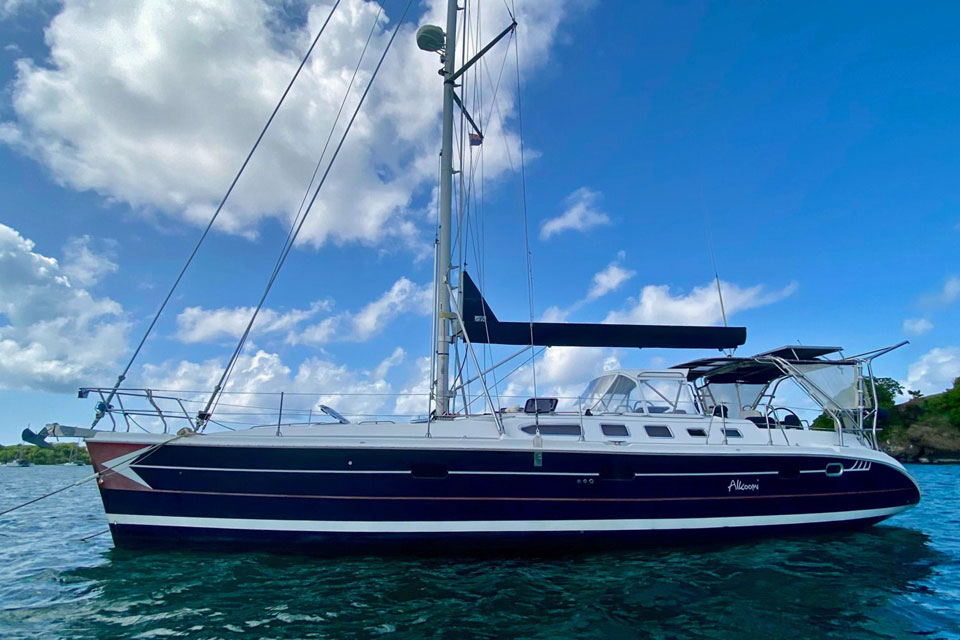 Hunter 466
Hunter 466Built for the Real World: Practicality Over Perfection
Most Hunter sailboats are predominantly constructed using GRP (Glass Reinforced Plastic), or what we more commonly call fiberglass. Their building methods, particularly for the American models, have consistently prioritized robust, production-line efficiency. This approach keeps things affordable and maintains a pleasing consistency across the fleet.
Hull construction typically kicks off with a blister-resistant ISO NPG gelcoat, followed by layers of chopped strand mat and hand-laid vinylester resin. Below the waterline, the hulls are solid fiberglass, often beefed up with Kevlar reinforcement in high-impact zones like the bow for extra resilience. Above the waterline, you'll generally find sandwich construction, often utilizing balsa-core, which adds stiffness and insulation. Decks also employ this sandwich technique, with marine plywood coring, frequently cut into smaller squares to prevent any widespread moisture wicking. Crucially, where hardware is installed, the plywood is often swapped out for aluminum plates, and everything is through-bolted for a truly secure attachment.
Now, some purists might argue that the interior joinery isn't quite as intricate as what you'd find on a custom-built yacht. Fair enough. But Hunter's unwavering focus has always been on practical, durable construction. Of course, like any mass-produced boat, quality control can vary a bit across different production eras. You might hear stories from some owners about chafed hoses or less-than-perfectly fitted interior trim on certain older models. Overall, though, Hunter sailboats are widely regarded as solid and long-lasting for their intended purpose: pleasant coastal cruising and extended voyages.
Many Hunter sailboats feature iron keels, a cost-effective choice. Owners will tell you that ensuring adequate rust protection here is definitely a long-term maintenance consideration. Rudders, on the other hand, are typically composite constructions with a stainless-steel skeletal structure, securely attached to a robust stainless-steel stock.
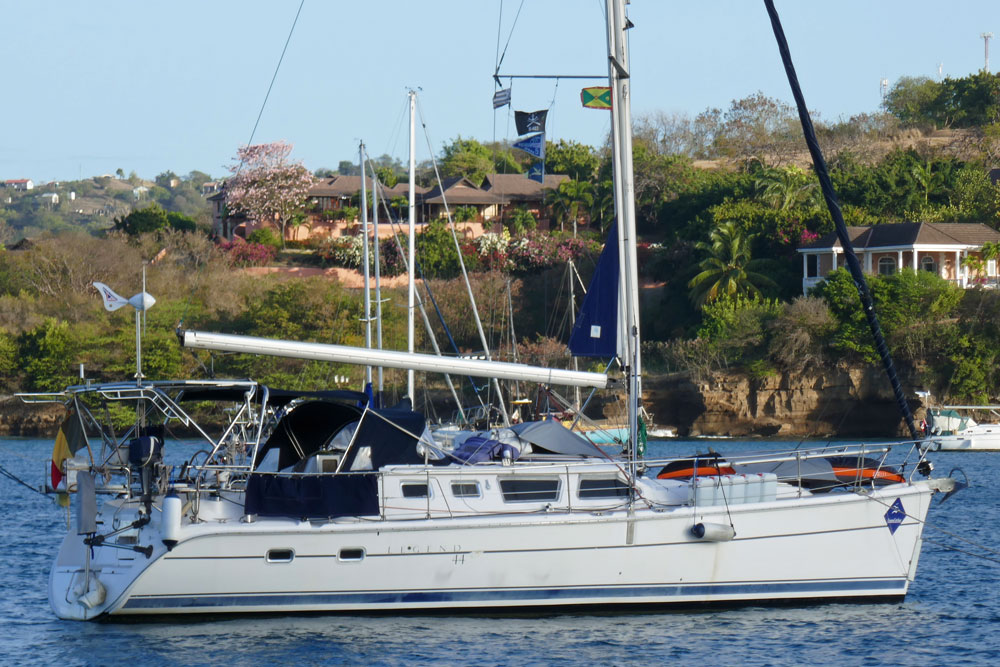 Hunter Legend 44DS (Deck Saloon)
Hunter Legend 44DS (Deck Saloon)On the Water: Comfort Comes First
Generally speaking, Hunter sailboats are known for being stable, easy to handle, and very comfortable under sail. You wouldn't often describe them as outright "fast" in a racing sense, but they certainly deliver respectable cruising speeds and are remarkably straightforward to control. The B&R rig, with its powerful mainsail and options for self-tacking jibs on some models, really contributes to their user-friendliness, making them a joy for couples or even singlehanded sailors.
When the conversation turns to Hunter sailboat bluewater capability, it's generally accepted that these vessels fit comfortably into the "coastal cruisers with offshore potential" category, rather than being purpose-built ocean voyagers. While it's true that some adventurous owners have indeed taken their Hunters on extensive offshore passages, and a few older models have even crossed entire oceans, their primary design brief leans heavily towards comfortable coastal exploration. Features like generous tankage and ample interior volume for provisions certainly lend themselves to longer trips. However, anyone planning serious offshore work might want to consider a few modifications, perhaps swapping out panel doors for more robust washboards, or giving a closer look at deep-water storage solutions, which can sometimes be a bit limited.
It's in the interior layout and overall comfort where a Hunter sailboat truly shines for its intended audience. The general aesthetic inside leans strongly towards practicality and comfort, with every effort made to maximize living space. You'll often discover inviting, open-plan layouts with well-defined zones, all designed with liveability in mind.
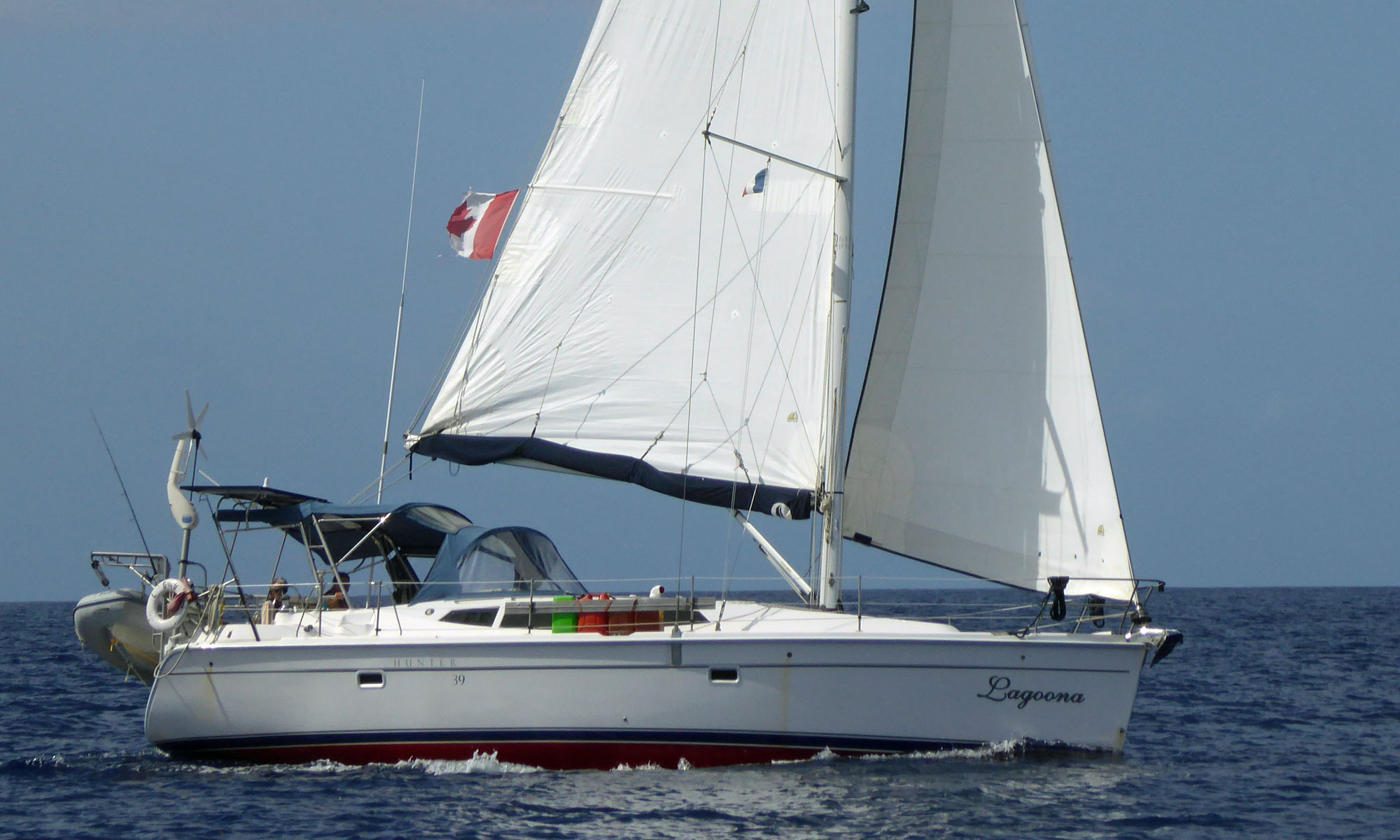 Hunter 39
Hunter 39Common interior features often include:
- Generous Headroom: A definitive hallmark of their comfort-focused design.
- Spacious Galley: Thoughtfully laid out for functionality, with ample counter space and storage.
- Comfortable Berths: You'll frequently find wide V-berths forward and notably large aft cabins.
- Ample Storage: While some owners might point out that accessing certain storage areas can be a bit tricky due to hull liners, the sheer volume available is generally impressive.
- Walk-through Transoms: Many models boast those inviting sugar-scoop transoms, making water access and dinghy boarding remarkably easy.
The focus on ergonomics and simply making life easy aboard is clear throughout. While perhaps not always boasting the most intricate, hand-crafted joinery, the interiors of Hunter sailboats are undeniably well-designed for extended stays, making them a favored choice for liveaboards and those embarking on longer cruises.
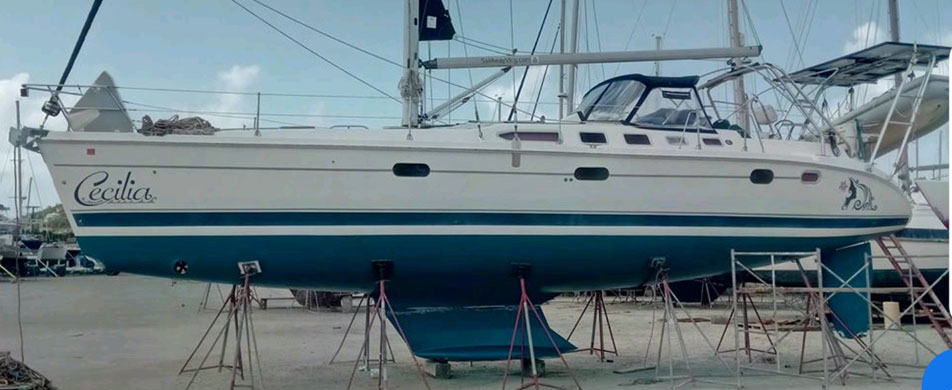 Hunter 46LE
Hunter 46LEPlace in the World: A Popular, Enduring Choice
Hunter sailboats have carved out a very strong market position as reliable, genuinely good-value cruising boats. Their typical buyers often include couples, families, and those who are either new to sailing or looking to step up to a larger, more comfortable platform without having to raid the kids' college fund.
The brand generally enjoys a pretty positive reputation within the broader sailing community, particularly praised for its affordability and those famously comfortable interiors. While they might not carry the same "old-school traditionalist" appeal as some older, more heavily built designs, their sheer practicality earns them widespread respect.
As for resale value, Hunter sailboats generally hold their own quite well, a testament to their ongoing popularity and the consistent demand for comfortable cruising boats. You'll also find a wonderfully active owner's association and vibrant online communities, like the Sailboat Owners Forums. Here, Hunter owners freely share a wealth of knowledge, advice, and countless stories, further cementing the brand's enduring legacy. If you're pondering buying a Hunter sailboat, these forums are an absolute goldmine of information.
Hunter's true legacy, then, lies in its unwavering commitment to making sailing accessible and genuinely enjoyable for a diverse range of people. By focusing on comfortable interiors, rigs that are a breeze to handle, and efficient production methods, they've successfully empowered legions of sailors to finally live out their cruising dreams.
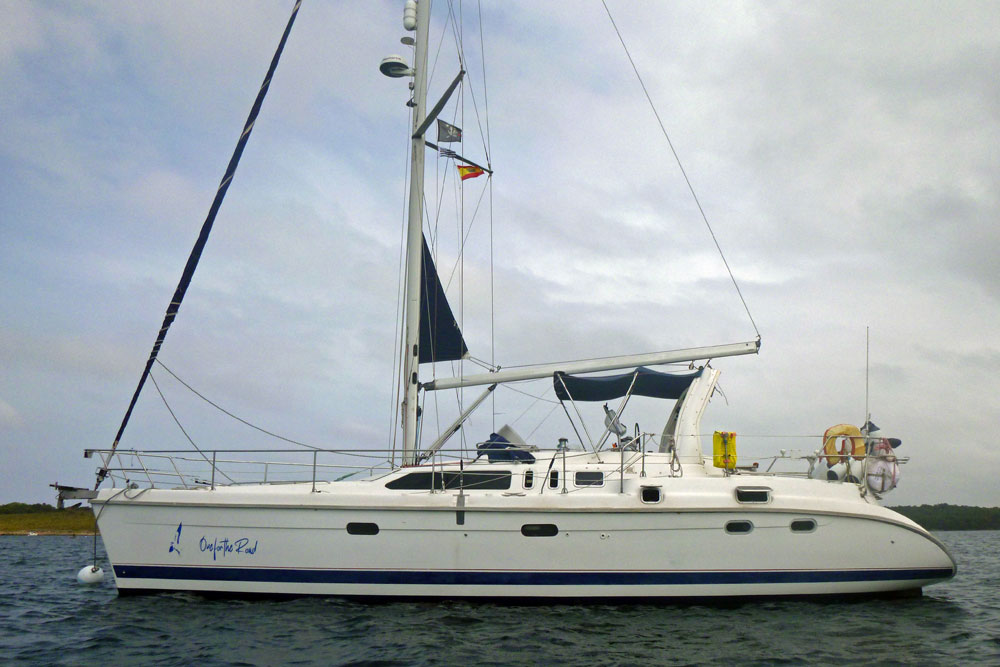 Hunter Passage 450
Hunter Passage 450The Other Side of the Coin: Addressing the Niggles
No boatbuilder is ever without its critics, and Hunter is certainly no exception. While generally well-regarded, there are a few common observations and criticisms that have surfaced over the years, particularly concerning specific models or production runs:
- A Bit Tender (Early Models): Some of the earlier models, for instance, initial Hunter 34 sailboats, occasionally drew comments for feeling a touch tender in stronger winds, meaning you might find yourself reefing a bit earlier than anticipated. To their credit, Hunter did address this in later production runs by adding more ballast.
- Rudder Woes (Early Days): A few owners of those early Hunter 34s reported issues with rudders being perhaps a bit too small or structurally weak. This sometimes led to replacements with larger, more robust versions.
- The B&R Rig: A Learning Curve?: While usually lauded for its simplicity, some newer sailors can find the multi-spreader, multi-shroud B&R rig a little less intuitive to tune compared to a more conventional setup. And because it lacks a true backstay or inner forestay, a headstay failure, while rare, could certainly be a more significant event.
- Interior Finish: While undeniably functional, some older Hunter sailboats did attract criticism for less refined interior and exterior teak joinery, or occasional niggles with quality control like chafed hoses or leaky ports and hatches.
- Iron Keels: As mentioned earlier, those iron keels, while cost-effective, can be more prone to rust if not meticulously protected, potentially requiring a bit more ongoing maintenance than, say, a lead keel.
- The "RV with Sails" Tag: This playful, sometimes pointed, jab often crops up. It speaks to the perception that Hunter sailboats prioritize interior volume and comfort to such an extent that some feel it compromises outright sailing performance. While often a subjective take, it definitely highlights the brand's core focus.
It's genuinely important to remember that many of these observations apply to particular models or specific production eras, and significant improvements have certainly been made over time, especially under the Marlow-Hunter stewardship, which has emphasized a renewed focus on quality and a greater attention to detail.
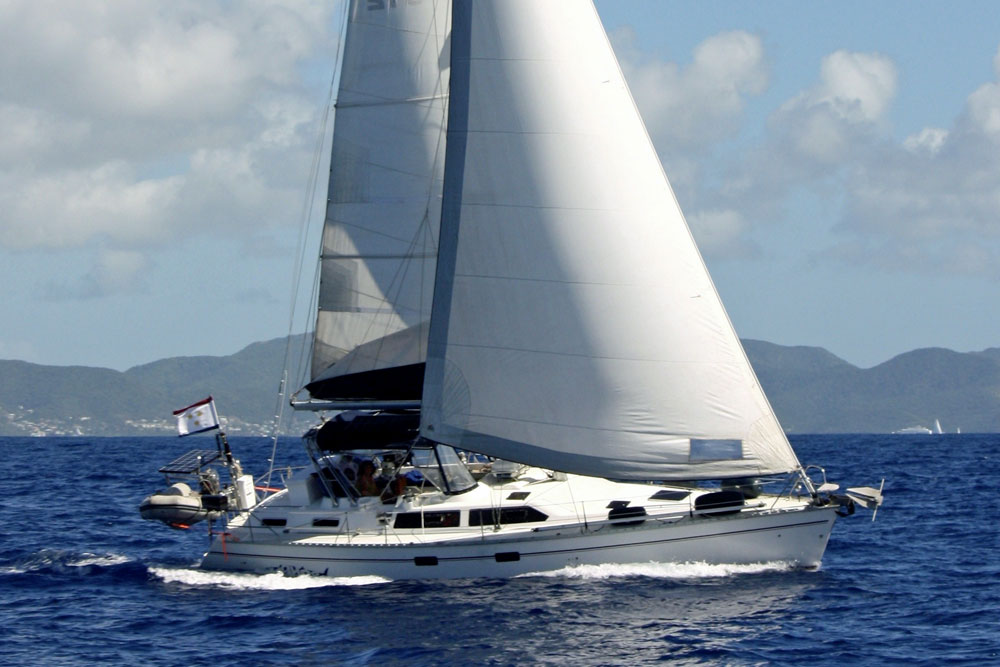 Hunter Passage 42
Hunter Passage 42The Human Element: Stories on the Water
Beyond the founders and naval architects, the true heart of the Hunter story lies with the countless individual Hunter sailboat owners who have enriched the brand's lore through their voyages and everyday experiences. From families who've called a Hunter home for years to intrepid couples embarking on extensive cruises, the personal narratives spun by Hunter owners are a powerful testament to these boats' practical nature. You'll stumble across accounts of Hunters tackling substantial bodies of water, handling challenging conditions, and consistently serving as wonderfully comfortable homes away from home. These real-world stories, often shared openly on online forums and dedicated owner groups, truly underscore the enduring capabilities and widespread appeal of Hunter sailboats.
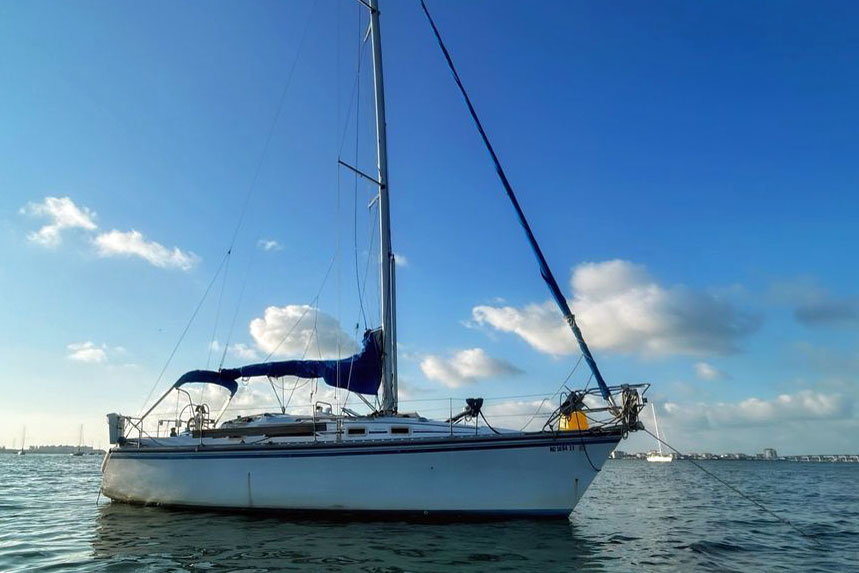 Hunter 31
Hunter 31The Last Word
Hunter sailboats, embracing both their American ingenuity and British design heritage, have carved out a truly significant and well-deserved place in the vast recreational sailing world. From the Luhrs brothers' pioneering vision of accessible production boats to the refined Marlow-Hunter offerings of today, the brand has steadfastly focused on delivering comfortable, genuinely user-friendly cruising yachts. While they might not be the automatic choice for the most hardcore performance enthusiasts, their consistent emphasis on generous interior volume, stable sailing characteristics, and practical design has cemented their status as a popular and enduring option. They're a favorite among coastal cruisers, those embracing the liveaboard lifestyle, and families simply looking to enjoy sailing without unnecessary complexity or prohibitive cost. Like any mass-produced boat, they've faced their share of critiques, but their overall reputation for value and sheer usability remains remarkably strong, buoyed by a loyal and thriving owner community. For many, a Hunter sailboat isn't just a boat; it's a sensible, rewarding gateway to endless waters and cherished memories.
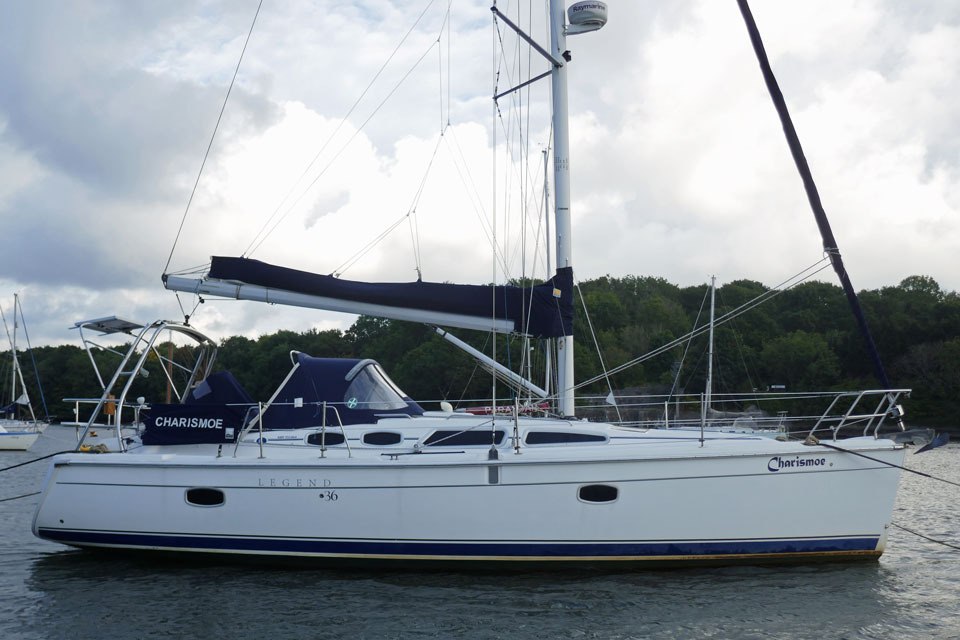 Hunter 36 Legend
Hunter 36 LegendSources & References
Recent Articles
-
Ohlson 38 Guide: Specs, Performance Analysis & Cruising Review
Jan 07, 26 05:52 AM
Discover the Ohlson 38 sailboat. An in-depth look at its Einar Ohlson design, Tyler GRP construction, performance ratios, and why it remains a top choice for offshore sailors. -
Passoa 47 Sailboat Review: Comprehensive Specs & Performance Analysis
Jan 04, 26 04:57 AM
Discover the Passoa 47, a legendary aluminium blue water cruiser by Garcia. Explore technical specifications, design ratios, and why its lifting keel is a game-changer for offshore sailors. -
Sailboat Wheel Steering Maintenance & Inspection Checklist
Dec 30, 25 02:32 PM
Keep your vessel’s helm responsive and reliable with our expert maintenance checklist. Master cable tensioning and system inspections to avoid mid-passage failures.


